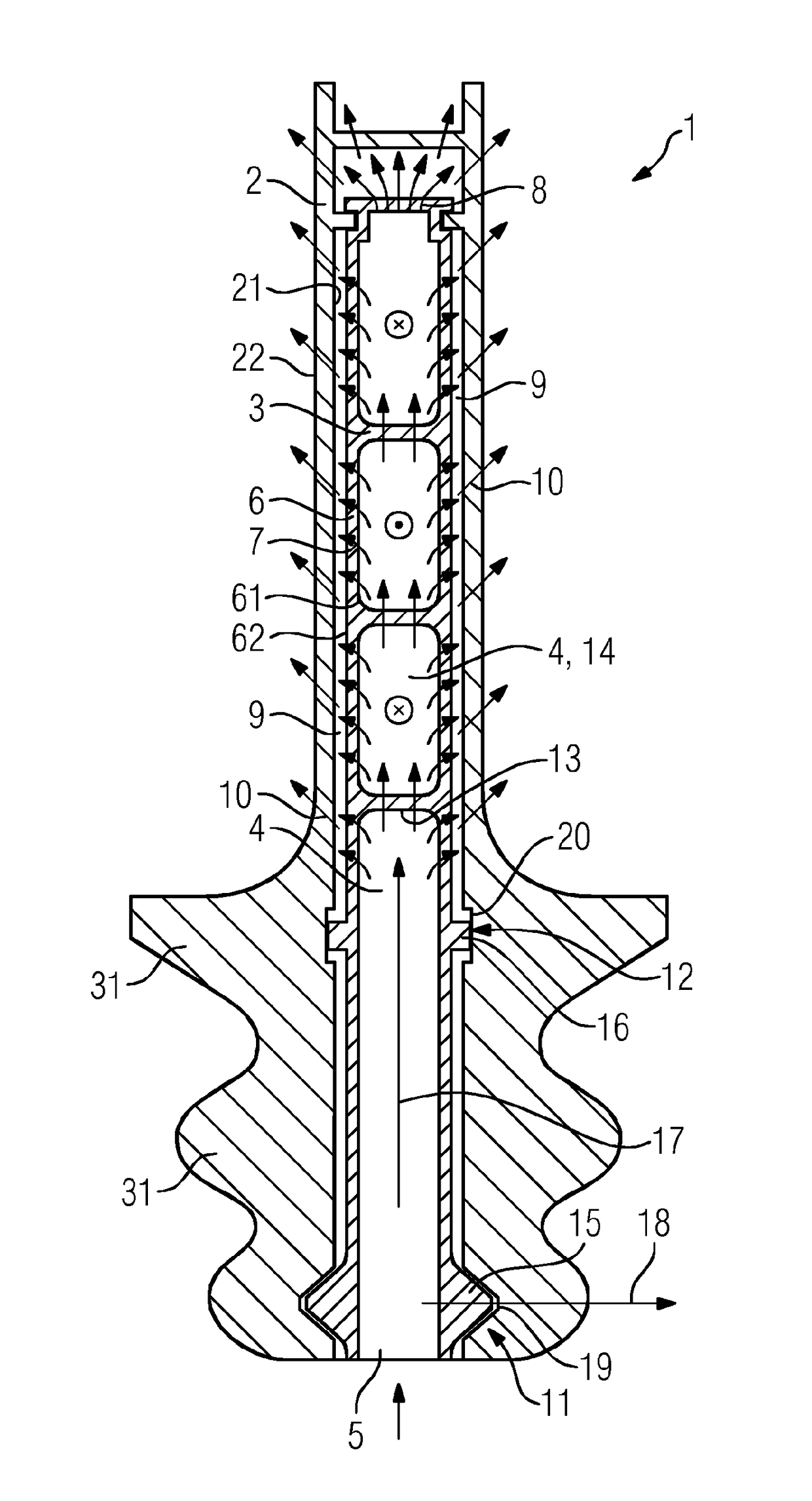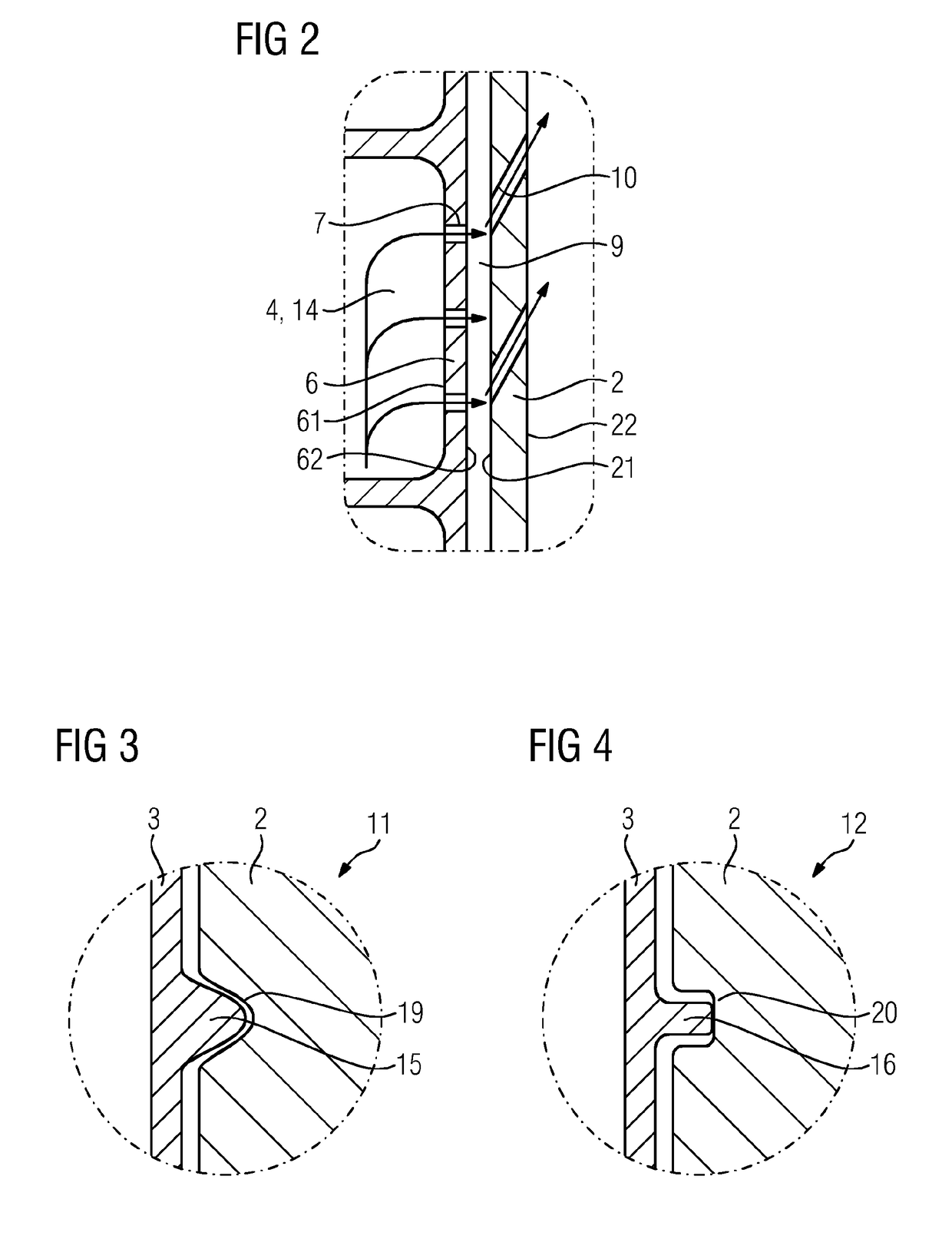Turbine blade having an inner module and method for producing a turbine blade
- Summary
- Abstract
- Description
- Claims
- Application Information
AI Technical Summary
Benefits of technology
Problems solved by technology
Method used
Image
Examples
Embodiment Construction
[0055]In the embodiment illustrated by way of example in FIG. 1, the turbine blade 1 comprises a casing 2 and an inner module 3. The inner module 3 is adapted substantially to the shape of the casing 2. The inner module 3 has an interior space 4 through which flow can pass in a longitudinal direction 17 of the inner module 3 and which has an inflow opening 5 and a wall 6 with a number of ducts 7, through which ducts flow can pass in a radial direction 18 and which ducts connect an inner side 61 to an outer side 62 of the wall 6 of the inner module 3. Furthermore, the illustrated inner module 3 has, in the distal region of the wall 6, a number of ducts 8 through which flow can pass in the longitudinal direction 17, which ducts are in this case arranged in addition to the ducts 7, through which flow can pass in the radial direction, in the lateral region of the wall 6.
[0056]Between the inner module 3 and casing 2 there is provided a peripheral intermediate space 9 which is delimited b...
PUM
| Property | Measurement | Unit |
|---|---|---|
| Angle | aaaaa | aaaaa |
Abstract
Description
Claims
Application Information
 Login to View More
Login to View More - R&D
- Intellectual Property
- Life Sciences
- Materials
- Tech Scout
- Unparalleled Data Quality
- Higher Quality Content
- 60% Fewer Hallucinations
Browse by: Latest US Patents, China's latest patents, Technical Efficacy Thesaurus, Application Domain, Technology Topic, Popular Technical Reports.
© 2025 PatSnap. All rights reserved.Legal|Privacy policy|Modern Slavery Act Transparency Statement|Sitemap|About US| Contact US: help@patsnap.com



